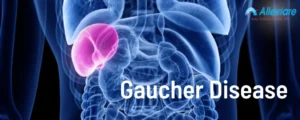What is Diabetes?
Diabetes is a sickness that happens when glucose (blood glucose) is excessively high, and this can be because of insulin opposition (Type 2 diabetes) or the failure to make insulin (Type 1 diabetes).
Type 1 Diabetes
Type 1 diabetes is generally analyzed during adolescence. Interestingly, type 2 diabetes can create at whatever stage in life yet is more normal in more established populaces.
Type 2 Diabetes
Prediabetes happens when your glucose is recognized as higher than typical yet isn’t sufficiently high to be Type 2 diabetes. There are changes that can be made to diminish the probability of advancing the illness to type 2 diabetes.
Early indication and sign of Diabetes
1. Frequent urination
At the point when your blood sugar level is high, your kidneys oust the abundance glucose, making you pee all the more much of the time. One of the early notice indications of diabetes is successive pee that is sufficiently critical to awaken you to go to the restroom during rest.
2. Expanded thirst
While your kidneys are staying at work past 40 hours and y
ou’re peeing all the more every now and again, significant liquids will be pulled from your tissues. Successive pee will cause you to feel continually parched.
3. Weakness
At the point when your blood sugar is high, your body strives to dispose of the abundance of sugar. In addition to the fact that this process negatively affects your body, yet it likewise changes the way that your body utilizes glucose for energy. Unreasonably high glucose, or hyperglycemia, has exhausting impacts among different side effects. Moreover, the parchedness that goes with more continuous pee is a typical reason for weariness in diabetics.
4. Obscured (Blurred) vision
High glucose can harm the little veins of the eye, bringing about an enlarged focal point that can cause obscured vision. As glucose levels rise and lower, your vision might get back to business as usual or decline, separately.
5. Expanded hunger
At the point when you have high glucose, your body is effectively hoping to dispose of it. Since your body ousts such a large amount of the glucose you’re getting from your food, you may have increased feelings of hunger.
6. Unexplained weight reduction
With the release of abundant glucose, you’re losing your biggest energy source, and when your body can’t utilize glucose for energy, it begins consuming fat and muscle, causing weight reduction. Unexplained weight reduction is viewed as critical at 10 lbs. or 5% of generally body weight.
7. Slow recuperating (healing) cuts and wounds
Like harmed eye tissue causing obscured vision, harmed veins cause debilitated blood dissemination. Along these lines, it’s harder for blood to arrive at the affected region, and minor cuts or wounds can require weeks or months to recuperate. This sluggish recuperating makes unhealed slices and wounds inclined to contamination, expanding the danger of removal.
8. Shivering or deadness in the hands or feet
High glucose can altogether affect nerves. This harm can begin with sensations of shivering or deadness and can raise to torment or neuropathy after some time.
9. Skin staining (discoloration)
Insulin obstruction can make your skin foster dull patches (acanthuses Nigerians) that are normally found in the folds of the neck, underarm region, or crotch. This obscured skin can seem brought and smooth up on the surface.
10. Yeast infection
The abundance of sugar in your blood and pee establishes an optimal climate for yeast. Yeast can take care of the additional sugar in genital regions, just as the mouth or armpits. Keeping up with glucose can assist with diminishing the probability of getting yeast infection
Risk factors for developing diabetes
● 45 years or more established
● Overweight or stout
● Inactive way of life
● Family background of diabetes
● History of gestational diabetes
● History of hypertension, coronary illness, or stroke
● Are African American, Alaska Native, American Indian, Asian American, Hispanic/Latino, Native Hawaiian, or Pacific Islander
If you find that you have Risk factor for developing diabetes, take additional consideration in forestalling the beginning of diabetes. Some normal danger factors include:





